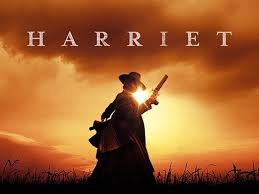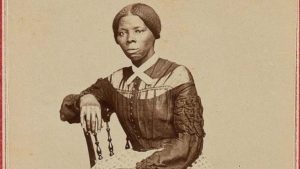Harriet Tubman Film Highlights the Leading Role of Africans in Their Own Liberation
From enslavement in Maryland to the Civil War, one woman typifies the legacy of resistance

Title: Harriet
Director: Kasi Lemmons
Producers: Gregory Allen Howard, Debra Martin Chase, Daniela Taplin Lundberg
Screenplay: Gregory Allen Howard, Kasi Lemmons
Starring: Cynthia Erivo as Harriet Tubman along with Leslie Odom Jr., Joe Alwyn and Janelle Monáe
Since the conclusion of the Civil War some 154 years ago, the existential consciousness and human culture of enslaved Africans has been a source of contested debate within academia, literature and popular artistic representations.
This is why a film such as “Harriet” is so important in contributing to the notion that African people were the principal agents of their own liberation during the antebellum period in United States history.
The story portrays the family life, religious beliefs and collective courage of a people who were systematically subjected to a dehumanization process for nearly 250 years. Harriet was born into slavery in 1822 at Dorchester County, Maryland and experienced the brutality, separations and extreme exploitation inherent within the system.
Opposition to slavery was not merely a moral issue. The abolitionist movement threatened the very foundation of the economic system of the U.S. during its first 90 years of historical development.
In its early phase, slavery was not confined to the Southern regions of the country. It thrived in the Northeast under Dutch, British and later American rule.
With specific reference to Maryland, the number of enslaved people grew from 1642, when the first recorded importation of Africans arrived at St. Mary’s City then under British colonialism, through the beginning of the 19th century after the U.S. independence from the Crown. The cultivation of tobacco was the principal agricultural crop which fueled the spread of the plantation economy.
During the course of the 19th century the number of Africans held in bondage decreased. At its peak in 1810, the U.S. census records 111,502 enslaved people. By 1860, on the eve of the Civil War, the number had been reduced to 87,189.
Many Africans were granted freedom through manumission while others escaped from the plantations. The declining significance of tobacco production played an important role in the decline of the demand for enslaved African labor. At the same time, many Africans were sold by plantation owners into the Deep South.
The Woman Called Moses
This film depicts the horrors of plantation life in the mid-to-late 19th century in Maryland. Born Araminta Ross, Harriet Tubman, as she was later known, escaped bondage in 1849 fleeing to the state of Pennsylvania where slavery had been abolished after the American War of Independence.
Tubman was beaten viciously as a child enduring the hostility of white plantation owners. As a youth she was hit in the head with a metal object by a slave master seeking to inflict pain on another African person. From that time onwards she experienced seizures, probably the result of a closed-head injury from the assault suffered as a child.
Her outlook was highly religious in character. It is reported she had become a Methodist and often had visions of escaping and helping others towards liberation.
After leaving the plantation in 1849 and settling in Philadelphia, a vibrant center of abolitionist activity through the Anti-Slavery Society as well as other independent African organizations and churches, she returned to Maryland on numerous occasions to transport her relatives and friends out of the state to freedom. Some 70 people were liberated under her direct guidance along trails, waterways and safe houses which became known as the Underground Railroad.
Maryland, although a state heavily reliant upon slave labor for its economic viability, was deeply divided over secession from the Union after 1860. The state remained within the Union due to the efforts of leading politicians working in conjunction with the-then President Abraham Lincoln. By 1860, approximately half of the people of African descent in Maryland were considered free from slavery.
The status of Africans whether free or enslaved was highly unstable. The passage of the Fugitive Slave Act of 1850, which emboldened Planters and their agents to pursue Africans for recapture in non-slaveholding states, intensified the resistance among abolitionists to the system of involuntary servitude. Since there was a risk of re-enslavement in many northern states, thousands of Africans migrated to Ontario in neighboring Canada, including Tubman who lived in St. Catharines with other members of her family.
When Lincoln issued the Confiscation Act and the Emancipation Proclamation in 1862, these measures did not apply to Maryland since the leadership of the state had not seceded. During the war, Tubman joined the Union military initially as a nurse and cook, then eventually becoming a scout for the defense forces on expeditions into the Confederate South.
One of her most notable achievements during the War was her leadership role in the Union Army’s raid at Combahee Ferry in South Carolina on June 1-2, 1863 which resulted in the liberation of 700 Africans. After the war, Tubman moved to a home she had purchased earlier in Auburn, New York in 1859. She provided care for her ageing parents and continued to be involved in emancipatory work related to the struggle for racial equality and women’s rights.
The Portrayal of Harriet
Cynthia Onyedinmanasu Chinasaokwu Erivo starred as Harriet Tubman in the film. Erivo, a Black British national of Nigerian ancestry, was an ideal choice for the part since the majority of Africans kidnapped into slavery and brought to North America originated in West Africa.
Erivo was born in 1987 in Stockwell, South London to parents who were from the West African state of Nigeria. She attended a Catholic Girl’s School and later the University of East London.
Her initial studies were in the field of psychology. However, she soon switched her major to the theater and transferred to the Royal Academy of Dramatic Art in London.
The young actor’s first appearances were in roles on British television programs such as “Chewing Gum” and “The Tunnel.” Moving to the stage she worked in the production “Marine Parade” by Simon Stephens at the Brighton Festival.
Later in a musical production she appeared in John Adams’ and June Jordan’s “I Was Looking at the Ceiling and Then I Saw the Sky” at Theatre Royal Stratford East. Eventually in 2013, Erivo played the role of Celie Harris in the Menier Chocolate Factory production of “The Color Purple.” This was the role which Whoopi Goldberg played in the award-winning film from the 1980s. Erivo had earlier portrayed Sister Mary Clarence/Deloris Van Cartier in a British version of the stage musical “Sister Act,” in which Goldberg had starred in the film during the 1990s.
By 2018, Erivo was chosen for the lead role in “Harriet.” The film was shot from October 2018 to January 2019. It was released on November 1, 2019. Since its opening, the $17 million production had earned nearly $40 million in box office sales in its first month.
Additional projects for Erivo includes “Chaos Walking,” based on Patrick Ness’ trilogy novels, with an anticipated release in 2020. Earlier in January 2019, Erivo appeared in the Home Box Office (HBO) series version of Stephen King’s novel “The Outsider.” She portrayed the character of investigator Holly Gibney in the production.
As it relates to audio work, Erivo co-produced and was the lead voice actor in the scripted thriller podcast Carrier from the broadcasting firm Qcode Media. Erivo worked as the series leading role of Raylene ‘Ray’ Watts, a truck driver who is transporting a trailer with mysterious and unknown contents.
Consequently, as a result of her work in “Harriet” and other productions, there is an undoubtedly promising career ahead for this young woman.
*
Note to readers: please click the share buttons above or below. Forward this article to your email lists. Crosspost on your blog site, internet forums. etc.
Abayomi Azikiwe is the editor of Pan-African News Wire. He is a frequent contributor to Global Research.
All images in this article are from the author


